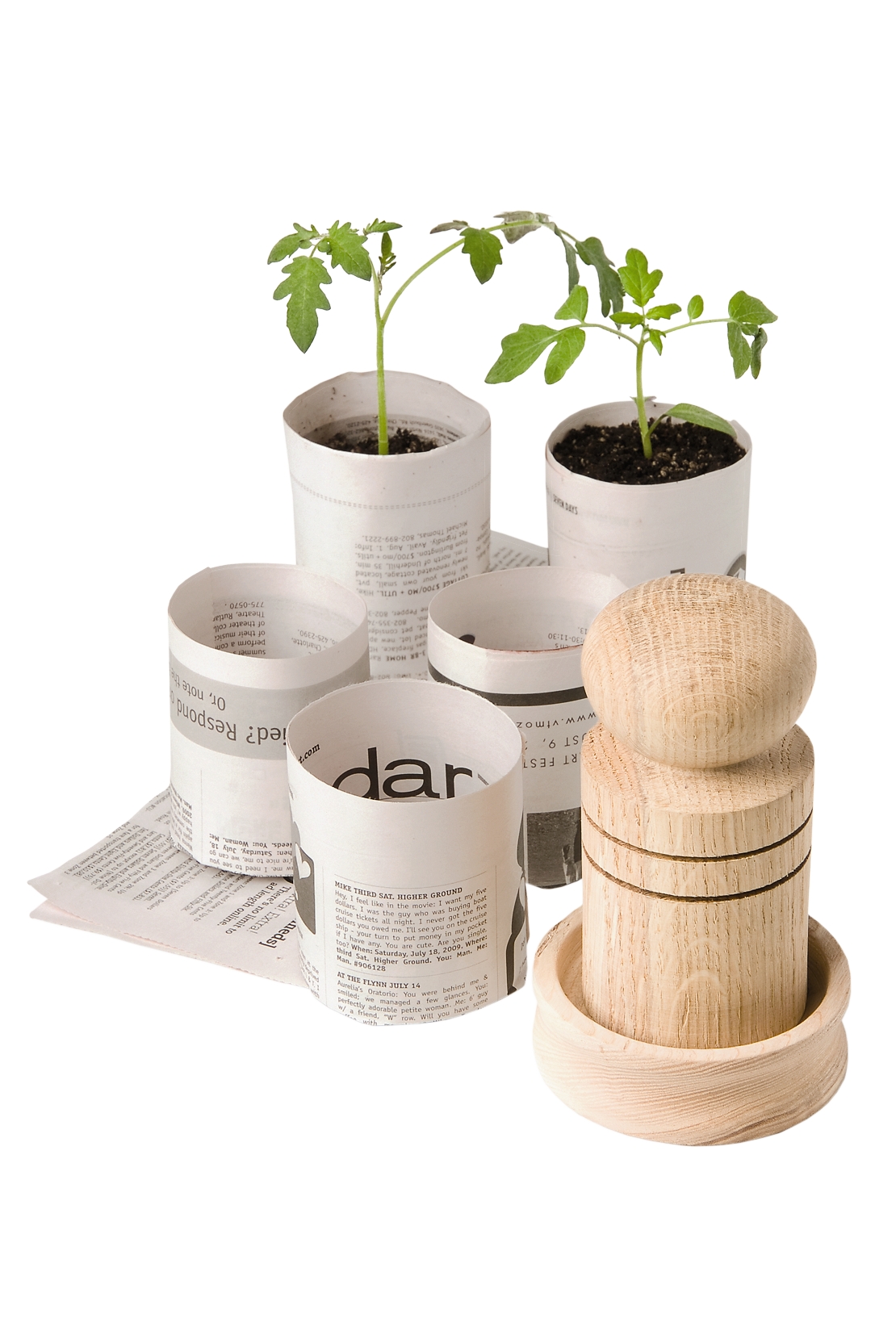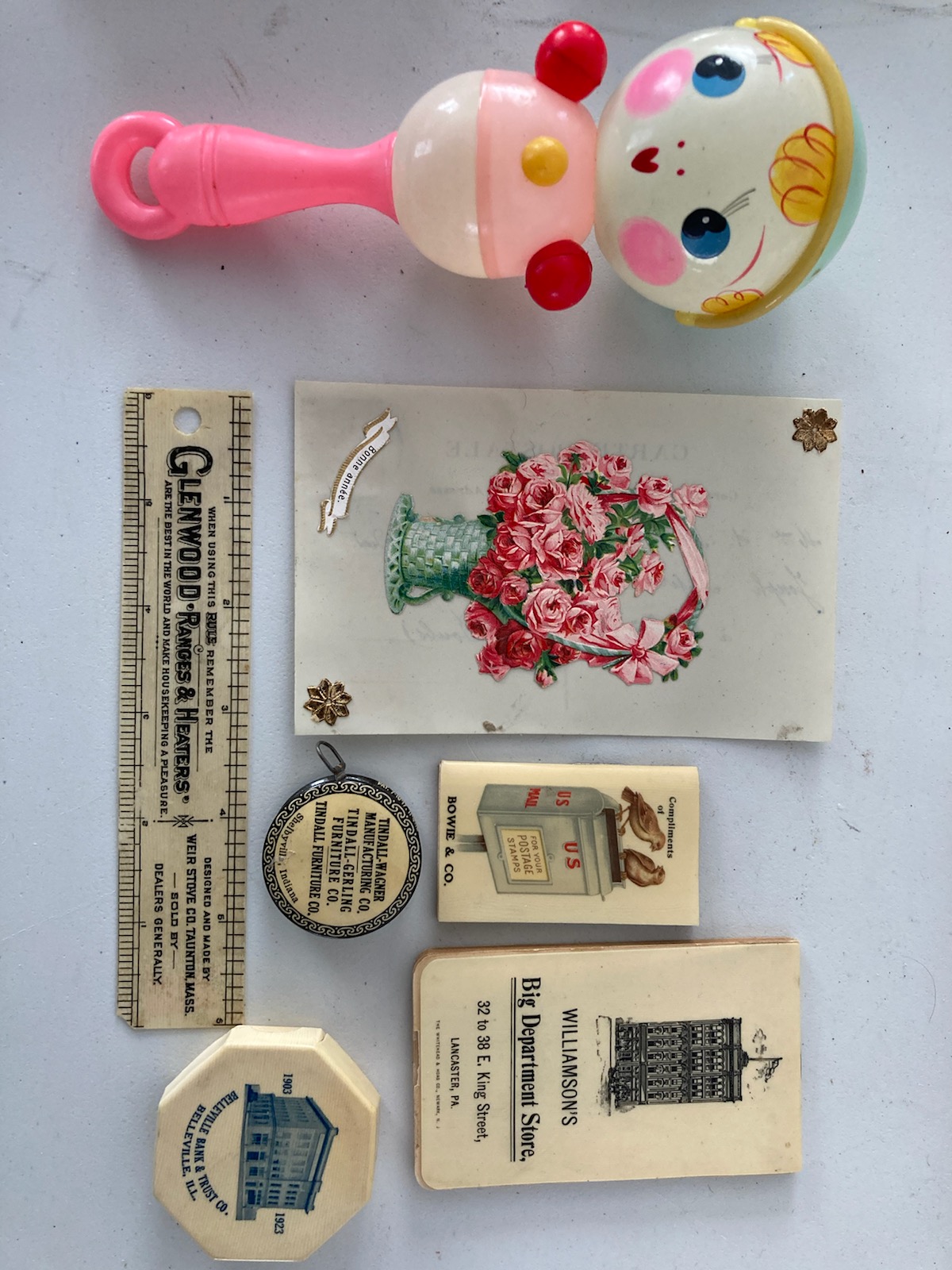
Gardening
Tips for Seed Starting Success

Paper pot makers make it easy to transform newspaper into biodegradable plant pots that are perfect for starting seeds.
Photo credit: Photo courtesy of Gardener's Supply Company
You created your wish list, ordered some or all of the seeds you will need, and they are beginning to arrive. Make the most of your investment with a bit of planning.
Starting seeds at the proper time, indoors or directly in the garden, ensures a good start to the growing season. Check the back of the seed packet for planting times and directions. Consult your local Extension Service's website for more details on the best time to plant in your area.
Organize your seeds by when they need to be started. You can create your own system or invest in one like Gardener's Supply's seed envelopes and dividers. This system allows you to organize seeds by type, planting season, color, garden location and more. Use your storage system to keep leftover seeds organized for future plantings. It will also save you money on future seed orders. Just be sure to place the seeds in an airtight container in the refrigerator.
Enter planting dates on your calendar as well. Months pass quickly and it is easy to miss important planting times. Creating a planting calendar will help you plant seeds at the proper time for the maximum benefit.
Gather seed starting equipment and supplies if starting seeds indoors. You will need a quality seed starting or potting mix and clean containers. Use yogurt and other small food containers for starting seeds. Drill holes in the bottom and clean them before planting. Avoid disease problems by sanitizing old plant containers. Soak them in a one-part bleach and nine-parts water solution for ten minutes. Then rinse in clear water before filling with planting mix.
Or try one of the new plastic-free, environmentally friendly seed starting options. Use a paper pot maker (gardeners.com) to convert newspaper into biodegradable plant pots. Consider cow pots made of composted manure that provide nutrients in a biodegradable pot. You can leave your seedlings in these containers when moving them into the garden.
Create your own pot-free seed starter with Gardener's Supply soil blocker. It presses moist potting mix into blocks that hold their shape. The blocks can be moved directly into the garden, reducing transplant shock.
Follow the directions on the seed packets for depth and care. Most seeds prefer warm conditions but do not need light to sprout. Keep the planting mix moist. Cover the containers with a sheet of plastic to conserve moisture and extend the time between watering.
Once you see any green, it is time to move the seedlings into bright light or under artificial lights. Keep the lights on for no more than 14 to 16 hours and four to six inches above the top of the plants for best results.
Once your plants are actively growing, you can begin fertilizing if needed. Check the planting mix to see if a fertilizer has been added and how long it will be effective before adding more. Follow the label directions on the fertilizer you select.
Share the fun and workload with friends and family. Perhaps you will start tomatoes for everyone, another person handles the peppers and yet another person the eggplants. Or just share extra seeds since each packet usually contains more than most gardeners have space to grow.
Most importantly, have fun.
Melinda Myers is the author of more than 20 gardening books, including Small Space Gardening. She hosts The Great Courses "How to Grow Anything" DVD series and the Melinda's Garden Moment TV & radio segments. Myers is a columnist and contributing editor for Birds & Blooms magazine and was commissioned by Gardeners Supply for her expertise to write this article. Her web site is www.MelindaMyers.com.
Antiques
Celluloid Collectibles

Celluloid was considered the first semi-synthetic plastic. According to Britannica, "some historians trace the invention of celluloid to English chemist Alexander Parkes, who in 1856 was granted the first of several patents on a plastic material that he called Parkesine." The Atlantic magazine attributes development to the United States inventor John Wesley Hyatt who is said to have created celluloid in 1869. Celluloid was created to replace ivory billiard balls but proved to be unsuitable for that purpose. According to the Atlantic, "because celluloid could be made to imitate expensive or rare materials -- such as ivory, tortoiseshell, and mother-of-pearl -- it was soon employed in the manufacture of fancy goods affordable for the growing middle class." It increased in use during the 1880s and it was used to make postcards, game pieces, toys, advertising novelties and souvenirs, jewelry, knitting needles, straight razor handles, and imitation linen collars and cuffs." "In 1882 John H. Stevens, a chemist at the Celluloid Manufacturing Company, discovered that amyl acetate was a suitable solvent for diluting celluloid," according to Britannica. The new clear celluloid was used to create flexible films. Celluloid was used in motion picture films into the 1930s.
Because celluloid was so widely used, we often find it in local estates. Dresser/vanity sets are some of the more common celluloid items we encounter. Years of heat exposure often affected the sets and they can become very brittle. A typical set in good condition sells for around $20. A vanity set in a color other than ivory can bring a little more.
Most celluloid is affordable to collect, but there are some celluloid collectibles that command strong auction prices. For example, cels (Merriam Webster: "a transparent sheet of celluloid on which objects are drawn or painted in the making of animated cartoons") from older cartoons can be quite valuable. In 2017 a cel from 1937 of the Evil Queen from Snow White sold for $25,000 and a Charlie Brown Christmas cel sold for $50,000. Because celluloid deteriorates over time there aren't a large amount of advertising signs in pristine condition. Three nice examples sold very well at auction. A Chancellor Cigar sign depicting a 1910 woman went for $12,000. An Ingram's Witch Hazel Salve sign sold for $13,000 in 2012 and a 1902 hanging celluloid Coca Cola sign reached $19,000 in 2011. Rare celluloid toys can also bring high auction prices. A 1930s waddling Donald Duck toy went for $13,000 in 2014 and a celluloid Mickey Mouse on a metal scooter with the original box brought $37,000 in 2008.
Older pinback buttons were also made of celluloid with metal backing. Some have brought astronomical prices. A rare "Buck Rogers 25th Century" celluloid pinback went for $2,700 in 2019. A Franklin D. Roosevelt for Senate pinback brought $3,750 in 2016. As you might expect, sports pinbacks are very popular. Few examples of a 1 ½" Mickey Mantle Fan club button are known to exist. One sold for over $23,000 last year. A pinback advertising a Detroit beer company is even more rare. The pinback is the only one known to exist depicting Babe Ruth and the 1916 World Champion Boston Red Sox. It sold for nearly $63,000 last year. I'm sure celluloid manufacturers weren't expecting the objects they made inexpensively for the middle class to sell for five figure sums over a century later.
We will have some celluloid objects from the estate of a long-time collector in our May multi-estate auction. We are still accepting quality items such as antique paintings, gold jewelry, sterling silver and older collectibles such as coins, sports memorabilia, advertising signs, and comic books for the May auction. We are also currently running an online auction of model railroad trains, die-cast cars, pressed steel trucks, and models that ends on March 10th. See our website for details: www.centralmassauctions.com
Contact us at: Wayne Tuiskula Auctioneer/Appraiser Central Mass Auctions for Antique Auctions, Estate Sales and Appraisal Services www.centralmassauctions.com (508-612- 6111) info@centralmassauctions.com